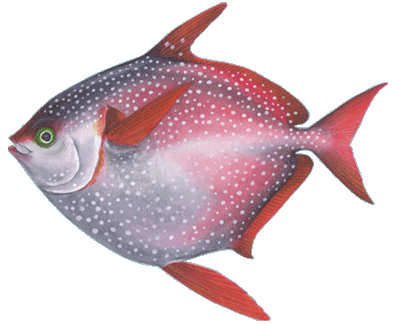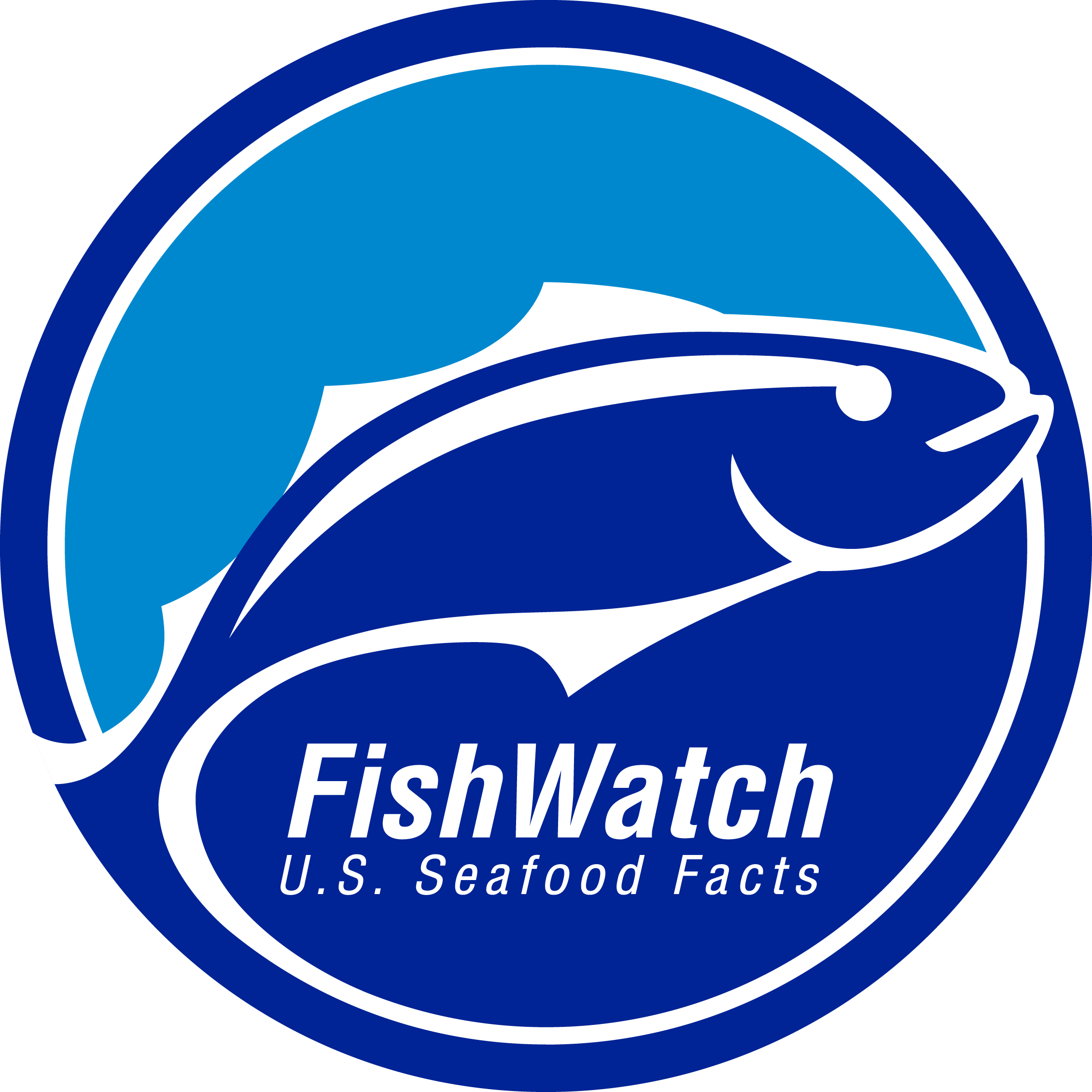
MOONFISH (OPAH)
Scientific Name: Lampris regius
Hawaiian Name: None
Japanese Name: Akamanbo
Opah or moonfish is one of the most colorful of the commercial fish species available in Hawaii. A silvery-grey upper body color shades to a rose red dotted with white spots toward the belly. Its fins are crimson, and its large eyes are encircled with gold. The moonfish’s large, round profile may be the origin of its name.
An opah has three types of flesh, each a different color. Behind the head and along the backbone is an attractive orange colored flesh. Toward the belly, the flesh pales to a pink color. The fish’s cheeks yield dark red flesh. These types of flesh all cook to a white color.
Opah landed in Hawaii range from 60 to over 200 pounds in weight. A pelagic wandering species, it is often found in the company of tunas and billfish. All of the opah landed in Hawaii are caught by longlining. Almost all opah sold in the U.S. market are from Hawaii.
It is rich and tasty. Previously underutilized, there is a rising demand for opah, particularly in the restaurant trade.
FISHING METHOD
All Hawaii opah are line-caught. Longline boats harvest the opah landed in Hawaii.
SEASONALITY
Caught year-round, but landings seem to peak in April-August.
PREPARATION NOTES
Texture: Firm
Flavor: Rich
Suggested Preparations: Raw (sashimi), Broiled, Baked, Sautéed, Steamed, Smoked
The opah’s flesh tends to be rich with fish oils, with a versatility of use that is very attractive to restaurants and chefs.
HEALTH & NUTRITION
Hawaii Moonfish is a rich source of protein, niacin, vitamin B6, vitamin B12, phosphorus, and selenium. It is also low in sodium. Hawaii Moonfish also provides about 1800 mg of omega-3’s (DHA and EPA) per 4 ounce serving of fresh fish. Click here for nutritional labels and claims.
Click here to download a two-page description of this species.
SUSTAINABILITY
Current status: Hawaii opah are being fished sustainably. Very little is known about opah and Hawaii opah population status is not formally assessed. There is no evidence that opah populations are in decline, or that overfishing is occurring.

Visit our Sustainability page and the the Opah page at NOAA’s FishWatch.gov for more information.
The FishWatch™ emblem is a registered trademark of the National Oceanic and Atmospheric Administration and is used with permission.

